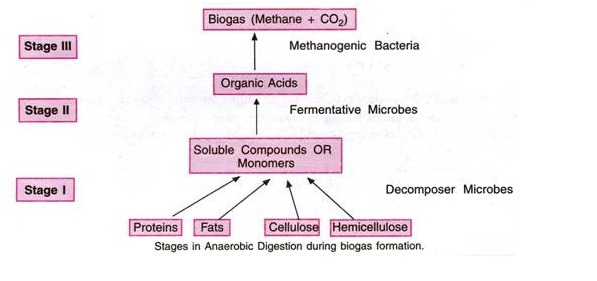ADVERTISEMENTS:
In this article we will discuss about:- 1. Meaning of Seed Dormancy 2. Methods to Break Seed Dormancy 3. Significance of Seed Dormancy.
Meaning of Seed Dormancy:
In several species seeds germinate as soon as they have undergone maturation and provided proper conditions for germination. To this category belong the seeds of bean, pea, maize, etc. In some species the seeds may germinate while being attached to the parent plant or enclosed inside the fruit. This is called the process of vivipary.
In many species seeds are incapable of germinating because of some inhibitory factor(s). Such seeds even placed under suitable environments of germination are unable to germinate. This is called process of seed dormancy. Sometimes the seeds are quiescent. Such seeds do not germinate because of the lack of favourable environmental conditions.
ADVERTISEMENTS:
Following are some of the causes of seed dormancy:
Light Requirements:
Some seeds require a definite light treatment before they can germinate. Such seeds supposedly possess inhibitors(s) which are disintegrated by light. Seeds which respond to light are photoblastic.
ADVERTISEMENTS:
Galston and Davies have proposed a possible mechanism for the control of dormancy by day length as follows:
As is evident from the above mechanism phytochrome mediates switch between GA and ABA synthesis. It may be mentioned that not all the seeds need light for their germination. In fact, some seeds are inhibited by light.
Moreover, light and temperature effects are interrelated. Some seeds respond to specific day length. The stimulatory effect of light can be replaced by GA, potassium nitrate, etc. It has also been demonstrated that effect of light does not affect embryo.
Temperature (Thermodormancy):
In seeds of many plant species pretreatment with low temperature quickens germination whereas high temperature inhibits their germination. Stratification is a process where seeds are layered in some trays and cold air is blown over them for several weeks or months.
The chilling may-affect embryo or seed-coat or both the parts of the seeds. It seems at low temperature ABA present in the seeds is broken down. In some seeds seed-coat causes dormancy and stratification decreases the ABA level. On the contrary chilling promotes GA synthesis.
Seed coat effect:
Dormancy in some seeds is due to the occurrence of hard seed coat. Once removed the seeds start germinating. Possibly biochemical or physiological processes may be involved in such a dormancy. In some instances seed coat is hard and impervious to oxygen.
ADVERTISEMENTS:
If in such instances the seed coat is broken and oxygen supplied, there is stimulation of seed germination. Seed coat, if hard and impervious, may also prevent diffusion of inhibitors. Signals for the dormancy breaking may be located in the seed coat.
Immature embryo:
In Ranunculus and some members of orchidaceae dormancy is due to immature embryos.
Inhibitors:
ADVERTISEMENTS:
Seeds of some species may contain inhibitors which act as germination inhibitors. These inhibitors may be located in the seed coat, glumes or some parts of the fruit, endosperm, embryo, etc. Coumarin, para-ascorbic acid, etc. are some of the very common inhibitors. On the contrary, KNO3, kinetin, GA counteract these inhibitors and promote seed germination.
Some seeds show secondary dormancy i.e. due to the lack of suitable environmental conditions they fail to do so. If such a dormancy is due to CO2, through the use of some stimulus, mechanical or chemical treatment may be given to promote embryo growth.
Methods to Break Seed Dormancy:
(i) Mechanical Scarification.Seeds having very hard seed coat when scratched with some abrasive material, softens the coat and makes it pervious to water.
(ii) Chemical Scarification.Dipping of seeds in strong acids like H2SO4 or some organic solvents e.g. acetone, alcohol or even dipping in boiling water breaks dormancy by weakening the seed coat.
ADVERTISEMENTS:
(iii) In some instances seeds subjected to high oxygen pressure also germinate.
(iv) Immature embryo dormancy may be broken when embryos are allowed to complete their development.
(v) Through the application of some chemical like potassium nitrate, gibberellin, kinetin etc., it is possible to conteract the inhibition on seed germination. Cyanide, azide, thiourea also induce germination. Fig. 24-3 shows presence of amygdalin which is the precursor of hydrogen cyanide and the latter is an inhibitor.
On soaking the seeds P-glucosidase becomes active and clevages glucose molecules from amygdalin. The aglycone released is decomposed into hydrogen cyanide and benzaldehyde.
Significance of Seed Dormancy:
Dormancy in plants is both useful and harmful to man. Cereal grains have temporary dormancy which is helpful for their harvesting, dry storage and as a source of food. In the absence of dormancy these grains were likely to germinate in the field and experience unfavourable conditions. Seeds of several weeds remain dormant for many years and are a source of nuisence to the farmers.
In the survival of the species, dormancy has a great advantage especially in areas having well marked seasonal changes and where winter and summer are of drastic types. In several of the alpine and temperate species, bud and seed dormancy is initiated with the beginning of winter and this process helps the plant species to tide over adverse winter conditions without any damage.
Similarly, in deserts, most annual species have their seeds dormant till sufficient rainfall occurs. The availability of rain water helps in the diffusion of inhibitors present in the seed coat of such species and germination is initiated.
In general two theories are advanced to account for the dormancy regulation and these are hormonal and restriction of gaseous exchange. It is generally assumed that seeds of several dormant species contain inhibitors.
Thus, when the level of these inhibitors is brought down or promoters are enhanced, germination is initiated. The role of oxygen uptake is also emphasized, especially in collaboration with high temperatures, as an important factor in causing seeds dormancy.



